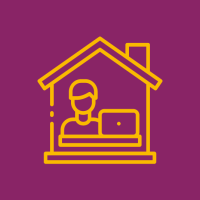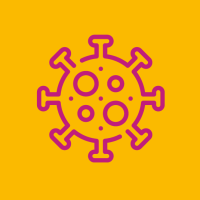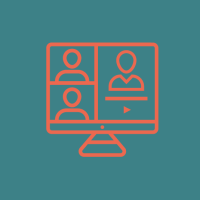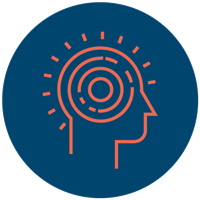NEWS
Tuesday 2 June 2020
Coping with change has always been a challenge for some, particularly when it comes to our working lives. But the COVID-19 pandemic has meant billions of people around the world have had to adapt, very quickly, to radically different social and working patterns. Change and uncertainty have become the ‘new normal’.
 Where once there was the daily commute, busy office environments, regular team social events, lunch with colleagues, business travel, conferences, and face-to-face client meetings, now, for many of us this has been replaced – and replaced in a matter of days – with laptops on tables, virtual meetings, dislocated working patterns, a pause in business activity and commutes that can be measured in metres not miles. Many employees are also now teachers as well as full time workers and this has all gone on long enough for us to form new, ingrained, habits.
Where once there was the daily commute, busy office environments, regular team social events, lunch with colleagues, business travel, conferences, and face-to-face client meetings, now, for many of us this has been replaced – and replaced in a matter of days – with laptops on tables, virtual meetings, dislocated working patterns, a pause in business activity and commutes that can be measured in metres not miles. Many employees are also now teachers as well as full time workers and this has all gone on long enough for us to form new, ingrained, habits.
And whether your employees are finding these new patterns and habits to be a positive or negative experience, this is still a big change and coping with it takes resilience. Soon enough, we can expect more disruption as we return to another, currently unknown, ‘normal’ – although we can at least assume these changes will come at a more measured pace.
“…whether your employees are finding these new patterns and habits to be a positive or negative experience, it is still a big change and coping with it takes resilience”
 Coping with change in the COVID-19 world
Coping with change in the COVID-19 world
Unsurprisingly, such profound disruption – made more difficult by our fears about the safety of loved ones and friends as well as the resilience of economies and livelihoods – has had an impact on the mental health and wellbeing of millions of people. The World Economic Forum recently stated that cases of mental illness had risen by 20% in India since the country went into lockdown.1
Similarly, in one extreme but powerful example, it was reported in the UK that more than half a million people had accessed a suicide prevention website set up by a UK charity in just a three-week period. The Zero Suicide Alliance, a collaboration of National Health Service (NHS) trusts, charities, businesses and individuals, revealed that 503,000 people had completed its online course.2
“…in the UK that more than half a million people had accessed a suicide prevention website set up by a UK charity in just a three-week period.”
 Speaking on a recent webinar, Andrew Davies, CEO of ICAS World, a global employee assistance programme (EAP) provider, said: “Working from home has been a highly sought-after employee benefit for more than a decade, something that has been touted as a positive, less stressful and mature approach to work. But in a pre-COVID-19 environment it has been a choice. Now it is not a choice. As such, many people, and the firms they work for, now recognise that it is not for everyone. Many people enjoy working in an office environment: they enjoy the buzz, the chat and camaraderie. For these people, working from home can be hard on mental health.”3
Speaking on a recent webinar, Andrew Davies, CEO of ICAS World, a global employee assistance programme (EAP) provider, said: “Working from home has been a highly sought-after employee benefit for more than a decade, something that has been touted as a positive, less stressful and mature approach to work. But in a pre-COVID-19 environment it has been a choice. Now it is not a choice. As such, many people, and the firms they work for, now recognise that it is not for everyone. Many people enjoy working in an office environment: they enjoy the buzz, the chat and camaraderie. For these people, working from home can be hard on mental health.”3
Conversely, of course, many people who weren’t at all sure about working from home, have found it suits them very well.
However, the challenge of change caused by the COVID-19 pandemic is not just the temporary shift towards more working from home. When – and if – restrictions start to ease, the move back to the office and the need to reacclimatise to a traditional ‘9 to 5’ working culture may prove equally hard. New habits will have been formed in this time of social distancing and home working that will have to be unformed again. People will once again need to get used to commuting, a rise in expenditure and less ‘me’ time – a change that might not be welcome to all.
 And yet, structural changes and digital technology could mean that many people never go back to the old ‘normal’ at all. In a recent article, Jes Staley, CEO of banking group Barclays, said: “The notion of putting 7,000 people in a building may be a thing of the past.”4
And yet, structural changes and digital technology could mean that many people never go back to the old ‘normal’ at all. In a recent article, Jes Staley, CEO of banking group Barclays, said: “The notion of putting 7,000 people in a building may be a thing of the past.”4
However, permanently switching to home working could pose a challenge for businesses – is it a good strategy for attracting and retaining the best talent? And is it wise? Evidence suggests younger employees are not happy with the current situation – they want flexibility but also need the social interaction of work. And, the opportunity to impress and progress can be hard when you’re a virtual colleague. Getting the balance right to suit the differing needs of employees will be vital.
Tech giants Twitter and Square announced all employees will have the option to work from home forever, which sent shock waves through business communities struggling with deciding how and when to reopen their offices.5
“…the move back to the office and the need to reacclimatise to a traditional ‘9 to 5’ working culture may prove equally hard.”
How can employers help their staff cope with change?
Whatever the future might hold, it’s worth businesses considering how they help employees face and manage the huge pressures that can come with change – especially change as comprehensive as the type most of us have experienced in the past few months. How can they help their staff prepare for returning to work when the world inches towards the future normal – whatever that might be? And do employee benefits need to adapt to a world where normality now means different things to different workers?
“28% of UK employers… said they had taken action to measure employee anxiety during the COVID-19 lockdown.”
Understanding these pressures, operating a more flexible working environment and regularly communicating with employees are important to help employees manage change. Focusing on wellbeing and mental health by implementing and communicating about employee assistance programmes (EAPs) and technology-led solutions and services have become crucial to caring for employees.
Employers have already been taking action. 28% of UK employers surveyed by Willis Towers Watson said they had measured employee anxiety during the COVID-19 lockdown, 39% have provided, or expanded, access to telemedicine and 7% said they will be facilitating access to COVID-19 testing.6
Speaking about the survey, Kevin Newman, Managing Director, Willis Towers Watson UK Health & Benefits, said: “Most elements of a company’s employee benefit programme will continue to serve their employees well if the relevance is communicated effectively. In times of stress and uncertainty, Employee Assistance Programmes and mental health services become even more important and employees that haven’t used these services in the past may need reminding that companies often have a network of valuable support services available to employees.”
He added: “The COVID-19 pandemic will prompt big changes in employee benefit programmes… Most companies at some point are likely to look at what they currently provide employees and ask, ‘are these benefits still relevant and is the balance still right for the new working environment?’”6
Changes employers are making to employee benefits programmes according to the WTW study.6
 42% of companies have made, or are planning to make, significant changes to their benefits programmes. Top priorities for enhancing benefits include:
42% of companies have made, or are planning to make, significant changes to their benefits programmes. Top priorities for enhancing benefits include:
- wellbeing programmes (60%)
- mental health and stress management services (58%)
- voluntary benefits (23%)
- annual leave policies (26%)
 44% of employers are expecting sick leave costs to increase. 25% are expecting an increase in healthcare costs and Group Income Protection, and 37% are planning to review the way their medical benefit plans are designed
44% of employers are expecting sick leave costs to increase. 25% are expecting an increase in healthcare costs and Group Income Protection, and 37% are planning to review the way their medical benefit plans are designed

61% think that communication of benefits and wellbeing programmes will be a top priority this year.

79% want to raise awareness of EAPs and 65% want to highlight their online mental health services
COVID-19 and mental health
 The link between COVID-19 and mental health seems undeniable. A US survey found that almost 70% of workers said that the COVID-19 pandemic has been the most stressful time of their careers. In a separate study of 2,700 global employees, more than 40% said their mental health had declined since the outbreak.
The link between COVID-19 and mental health seems undeniable. A US survey found that almost 70% of workers said that the COVID-19 pandemic has been the most stressful time of their careers. In a separate study of 2,700 global employees, more than 40% said their mental health had declined since the outbreak.
According to the Harvard Business Review, “Business leaders should regard this as a serious problem. Unaddressed mental health conditions cost US companies nearly USD17 billion per year in productivity loss. In terms of hiring and retention, younger employees particularly are demanding change: 50% of millennials and 75% of Gen Z employees have left a prior role for mental health reasons — compared to 34% overall. These are numbers we expect to rise in light of COVID-19.7
“As companies continue to weather the COVID-19 outbreak and plan for a return to the office, those who have effective mental health ERGs [Employee Resource Groups], as part of a broader mental health strategy, will see higher engagement, increased productivity, and fewer instances of burnout.”
A digital, yet human approach
The COVID-19 pandemic has tested the effectiveness of modern technology to the max – and, mostly, the technology has handled the crisis extremely well. Think how webbased conferencing services have become the primary resources for both business and social interactions. In many ways, the crisis has further cemented the role that technology plays in all parts of our lives and high numbers of people say they feel more connected than ever.
In a recent Aon study, when asked how the experience of responding to COVID-19 might change future workforce strategies, 44% of companies in North America expect their digital transformation agendas to accelerate following their initial response to COVID-19. 83% of companies said they anticipate their exploration of different working models, such as, expanded working from home and increased flexible hours approaches, will speed up as well.8
But sophisticated technologies shouldn’t replace a human, employee-centric approach. Technology should enable employers to keep up communication and show their people that their mental and physical wellbeing is important to the success of their business.
“83% of companies said they anticipate their exploration of different working models, such as, expanded working from home and increased flexible hours approaches, will accelerate…”
Businesses taking this approach will likely consider a variety of ways to limit employee stress and promote wellbeing. Clear and straightforward communication is vital, as is a flexible approach that respects people’s personal commitments (such as children). Offering mental and physical wellness support – through, for instance, EAPs – has become a powerful way to engage with employees and prioritise their wellbeing. And, of course, taking a patient approach. Companies need to understand that some staff may find the change going into the lockdown – and the change back when it comes – very hard.
As Andrew Davies, CEO of ICAS World, said: “The ability to manage stress is very strong among people. We recover given the right environment. But building resilience in them is vital. In the COVID-19 world, all of us have been impacted but all of us have been impacted uniquely. And while we have been enabled by technology, in many ways work is a lot of more difficult to manage – including the ability to switch off.
“In the simple model of stress - change is always going to be stressful. Employers and employees need to ask themselves, do I have the resources to cope with this? What is the support system? If I have the resources, I can cope; if you don’t, then the physiological response can become quite difficult.”3
“Offering mental and physical wellness support – through, for instance, EAPs – has become a powerful way to engage with employees and prioritise their wellbeing.”
No one knows quite what is going to happen next, but we can safely assume that, for many people, working life will never be quite the same as it was before.
A ‘future normal’ will perhaps offer more freedom and flexibility for employees to create a schedule that works best with their personal lives. Location independence, shifts that work around childcare and not spending hours and money commuting could result in a happier, mentally healthier and more productive workforce. But the COVID-19 pandemic has proven, wherever your employees are located or what shifts they work, mental health tools are an important addition to any benefits programme.
What we do know, is that as a global employer you need to be ready to embrace whatever comes and make it work for both your organisation and your employees wherever they are in the world – no easy task. And it will be vital to have one eye on the mental wellness, resilience and expectations of your employees at the same time.

1 Ashwin Naik, World Economic Forum https://www.weforum.org/agenda/2020/05/indias-lockdown-ends-mental-health-crisis-beginning/ (sourced May 2020)
2 Simon Murphy, The Guardian https://www.theguardian.com/society/2020/may/18/half-a-million-access-uk-suicide-prevention-training-amid-covid-19-warnings-nhs (sourced May 2020)
3 Maintaining your mental wellbeing while working at home, Andrew Davies, ICAS World, 15 May 2020, organised by MAXIS GBN
4 Daniel Thomas, Stephen Morris and Andrew Edgecliffe-Johnson, Financial Times https://www.ft.com/content/1b304300-0756-4774-9263-c97958e0054d (sourced May 2020)
5 Dana Brownlee, Forbes https://www.forbes.com/sites/danabrownlee/2020/05/18/twitter-square-announce-work-from-home-forever-optionwhat-are-the-risks/ (Sourced May 2020)
6 Anon, Willis Towers Watson https://www.willistowerswatson.com/en-GB/News/2020/05/two-in-five-uk-companies-are-changing-their-employee-benefit-programmes-due-to-covid-19 (sourced May 2020)
7 Jen Porter, Bernie Wong, Kelly Greenwood, Harvard Business Review https://hbr.org/2020/05/how-to-form-a-mental-health-employee-resource-group (Sourced May 2020)
8 Anon, Aon https://aon.mediaroom.com/2020-04-22-North-America-Aon-Survey-Reports-Companies-Accelerate-Workforce-Compensation-and-Benefits-Changes-in-Response-to-COVID-19 (Sourced May 2020)
This document has been prepared by MAXIS GBN and is for informational purposes only – it does not constitute advice. MAXIS GBN has made every effort to ensure that the information contained in this document has been obtained from reliable sources, but cannot guarantee accuracy or completeness. The information contained in this document may be subject to change at any time without notice. Any reliance you place on this information is therefore strictly at your own risk. This document is strictly private and confidential, and should not be copied, distributed or reproduced in whole or in part, or passed to any third party.
The MAXIS Global Benefits Network (“Network”) is a network of locally licensed MAXIS member insurance companies (“Members”) founded by AXA France Vie, Paris, France (AXA) and Metropolitan Life Insurance Company, New York, NY (MLIC). MAXIS GBN, registered with ORIAS under number 16000513, and with its registered office at 313, Terrasses de l’Arche – 92 727 Nanterre Cedex, France, is an insurance and reinsurance intermediary that promotes the Network. MAXIS GBN is jointly owned by affiliates of AXA and MLIC and does not issue policies or provide insurance; such activities are carried out by the Members. MAXIS GBN operates in the UK through UK establishment with its registered address at 1st Floor, The Monument Building, 11 Monument Street, London EC3R 8AF, Establishment Number BR018216 and in other European countries on a services basis. MAXIS GBN operates in the U.S. through MetLife Insurance Brokerage, Inc., with its address at 200 Park Avenue, NY, NY, 10166, a NY licensed insurance broker. MLIC is the only Member licensed to transact insurance business in NY. The other Members are not licensed or authorised to do business in NY and the policies and contracts they issue have not been approved by the NY Superintendent of Financial Services, are not protected by the NY state guaranty fund, and are not subject to all of the laws of NY. MAR00639/0620